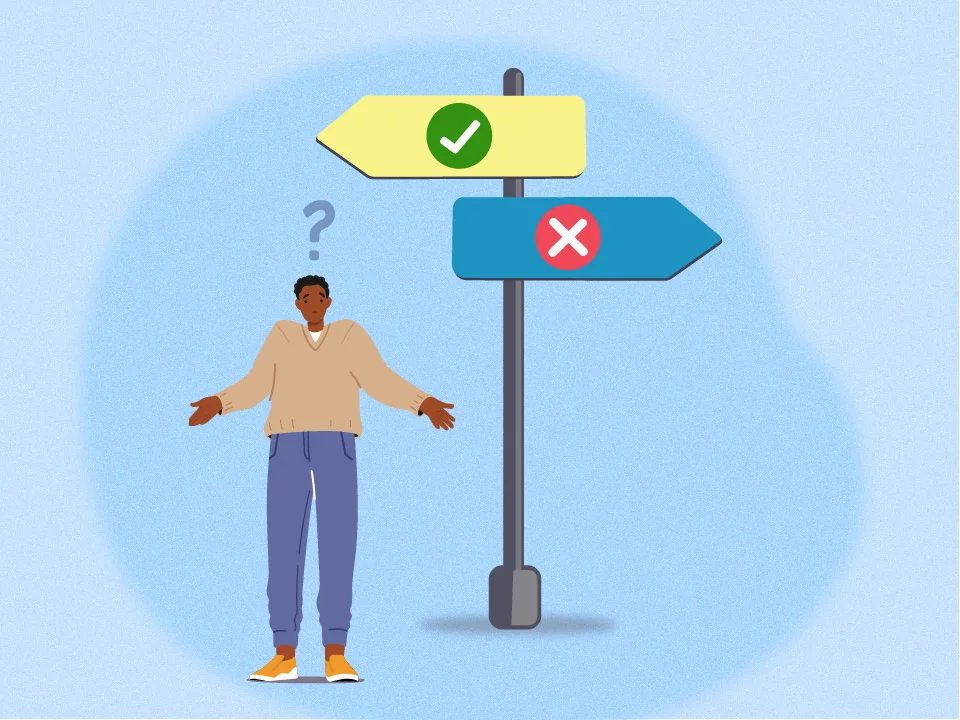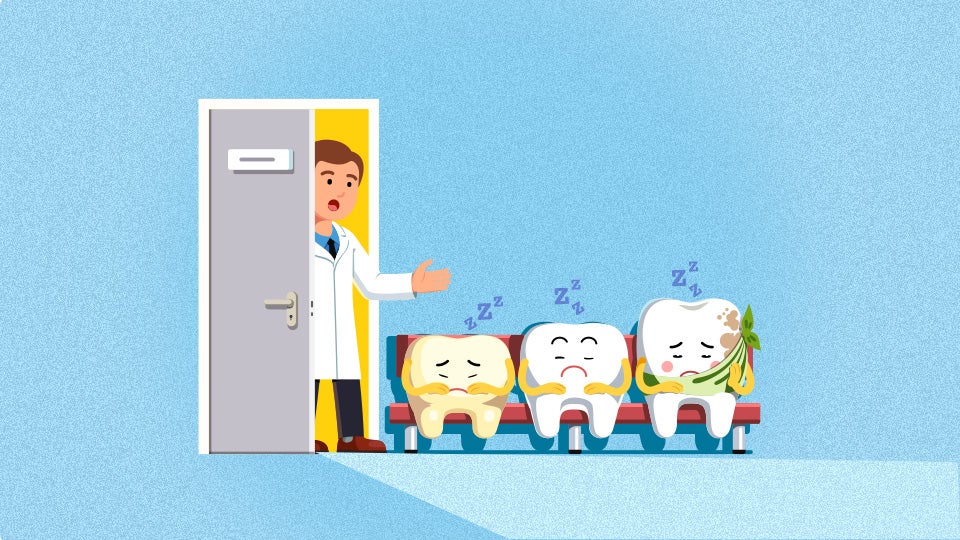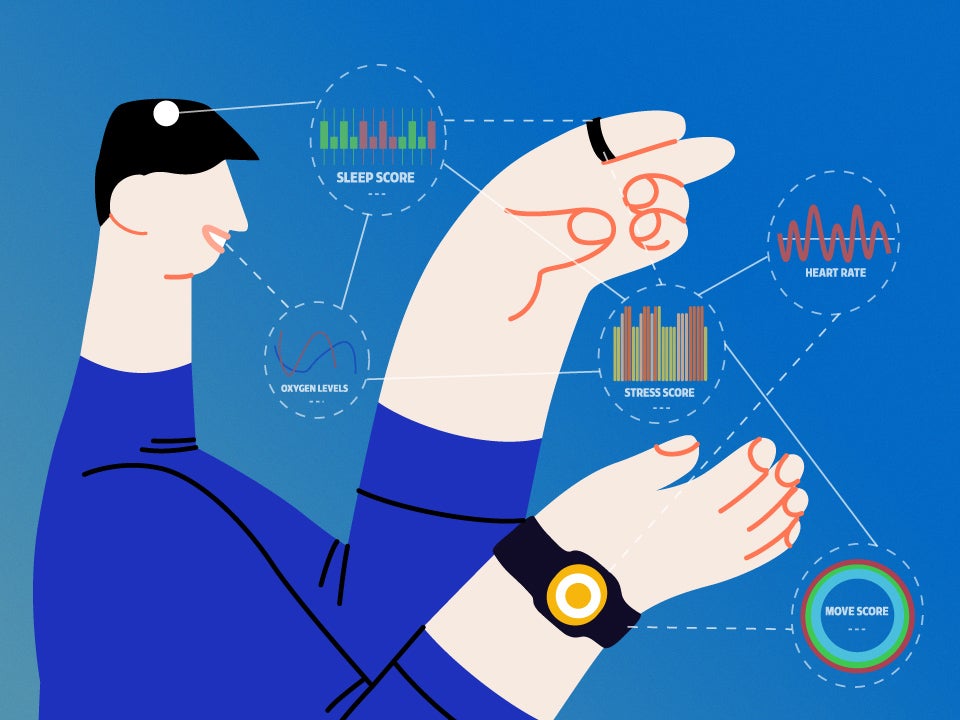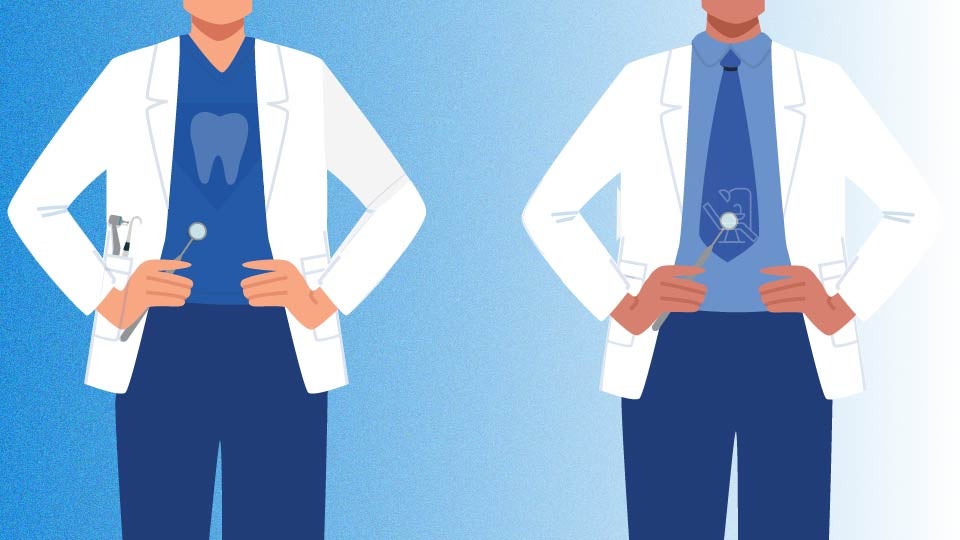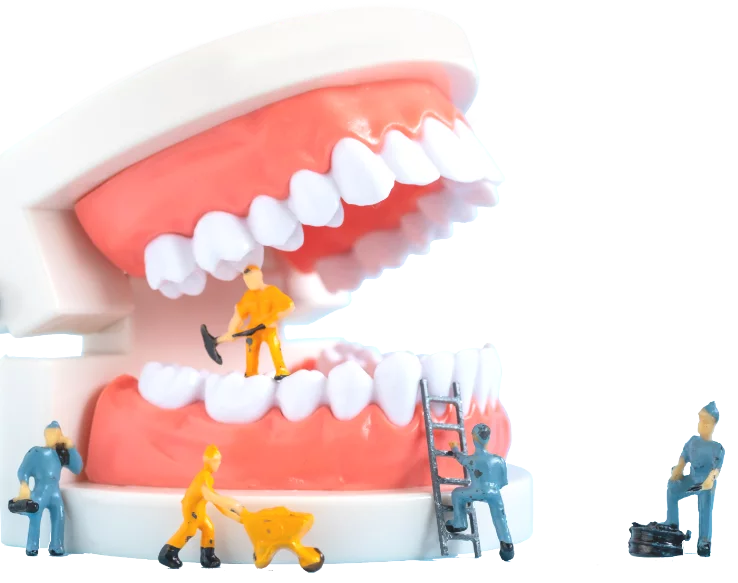Blog Summary Misinformation about oral health spreads quickly online, leading to harmful dental habits. This article debunks common myths about brushing, fluoride, flossing, sugar, and more—replacing them with expert-backed facts to help you maintain strong, healthy teeth and gums for life.
In today's information age, more myths and fads related to teeth continue to develop online that aren't supported by dental professionals. While debunking these falsehoods is important, teaching good dental habits based on facts is crucial to ensure people know how to properly care for their pearly whites.
Common Myths About Oral Hygiene
Sometimes, common dental myths about oral hygiene don't come from someone who intentionally means to misguide you. Rather, people develop ideas about maintaining their teeth from what seems like common sense, even if it does more harm than good. A few common misconceptions about oral hygiene include:
- Brushing harder makes teeth cleaner.
- Primary teeth, or baby teeth, don't need to be cleaned because they are disposable.
- Genetic factors are attached to tooth health.
- Dental implants are cosmetic.
- Teeth whitening damages teeth.
- X-rays are dangerous.
- Flossing is bad for your gums.
- If you avoid eating sugar, you won't get cavities.
Debunking Fluoride Myths
Fluoride can be controversial. It is purposefully added to tap water to help improve tooth health. While it can be harmful if taken in large quantities, only regulated amounts are found in tap water. Spitting out toothpaste after you brush helps prevent consuming too much fluoride at one time. But fluoride's ability to protect your teeth should never be ignored.
Fluoride strengthens your teeth and makes it difficult for cavities to develop. Out of the 50% of fluoride that is retained by adults through direct contact or from tap water, 99% of it is stored in bones and teeth.[1] Healthy teeth have a huge impact on your overall health and your quality of life.
Debunking Misconceptions: Expert Perspective
Facts are important. Three interesting facts you may not have known about teeth are:
- Teeth are not bones.
- Most people have 20 primary teeth but 32 adult teeth.
- Your teeth are as unique as your fingerprints.
Facts like these from experts help people better understand their own dental situation. But myths and misconceptions can be stated just as easily. Sometimes, it's difficult to know what is fact and what is fiction. So, we've debunked some of the most common dental misconceptions to set the record straight.
Misconceptions About Brushing Techniques
As with anything in your mouth, it is important to be gentle while you brush. Gums, like the cuticle of your fingernail, can be pushed back or hurt if you push too hard. According to an epidemiological study, forcefully brushing in a horizontal direction is the second most contributing factor for gum recession.[2] So, brushing thoroughly but gently to maintain healthy gums is important.
Myths About Primary Teeth

Just because primary teeth are not permanent doesn't mean they are disposable. Children need strong, healthy teeth throughout childhood to avoid painful toothaches, eat without difficulty, and learn proper tongue placement when speaking. Primary teeth also serve as an important placeholder for their adult teeth and to maintain healthy gums. According to a cross-sectional study about parents' attitudes toward oral hygiene in their children's teeth, poor primary tooth care could cause children to suffer from malocclusion or improper alignment with their permanent teeth.[3]
Genetics and Oral Health: Separating Myth from Reality
role that genetics plays in oral health, environmental factors also contribute to tooth decay and gum disease.[4] If you know that you have a genetic disposition to have common dental issues, all the more reason to be consistent with brushing and flossing and keep regular visits to the dentist to overcome genetics.
Myths about Dental Implants
While it may seem like dental implants are a luxury cosmetic procedure, they actually have several practical applications that greatly improve your quality of life and benefit your oral health. Dental implants not only replace teeth, but they act as artificial roots, helping preserve the jaw bone.
When you have a missing tooth, surrounding bone can start to deteriorate, which can affect the adjacent teeth. The implant signals to the jaw that there is still a tooth in place, so the jaw bone is preserved, and all other teeth remain healthy and in place.[5]
Misconceptions About Teeth Whitening
While not all teeth whitening treatments are equally as safe for your teeth, there are plenty of healthy ways to brighten your smile. Your dentist can direct you in the best way to brighten your teeth while maintaining oral health. According to a study on the efficacy and safe use of teeth whiteners, the enamel can be damaged when the manufacturer's instructions are not properly followed.[6] Your dentist knows your dental history and is also well-practiced at whitening teeth. To be sure your teeth are whitened in the safest, most effective environment, opt for in-office teeth whitening.
Misconceptions About Radiation
Radiation is dangerous but like many other things in life, quantity matters. Modern X-ray machines emit the smallest amount of radiation possible to obtain the images that dentists need of teeth. The radiation levels produced by X-ray machines are well within a safe range for you without causing any adverse effects.
People get a certain amount of radiation exposure from the natural world every day. By comparing a day's worth of natural exposure to the amount found in X-rays, patients can see how little radiation they receive after a dental exam. An intra-oral X-ray is equivalent to one day's natural exposure to radiation, while a flight from L.A. to London exposes passengers to ten days' worth of natural radiation exposure.[7]
Misconceptions About Flossing
When you aren't used to flossing, the first time can make your gums bleed. But this isn't a sign that flossing is harmful, it's actually quite the opposite. Flossing gets all the food that is stuck between your teeth after you eat that your toothbrush can't touch. Your gums should not bleed with regular flossing, but it is important to be gentle. Twelve well-controlled studies show that brushing and flossing together reduced mild gum disease and plaque significantly better than brushing alone.[8]
Misconceptions About Sugar
Sugar isn't responsible for causing cavities in your teeth, though it is used in the process. The real culprit is the bacteria in your mouth that causes tooth decay. The bacteria feed on the sugars left on your teeth from the food you eat and change it into an acid that wears away the enamel.[9]
Tips for Maintaining Healthy Teeth and Gums
Some people believe that the effect of poor oral health only impacts the teeth and gums. While healthy teeth and gums are extremely important, poor oral health is also directly connected to adverse bodily health conditions. This includes heart disease, some cancers, and even Alzheimer's Disease.[10] Consider these findings:
- Diabetes and gum disease are linked in both directions. Diabetes makes gum disease worse, and unhealthy gums can make it harder to control blood sugar. [11]
- Research has shown that people with gum disease are two to three times more likely to suffer from a heart attack or other serious cardiovascular issue. [12]
- Gum inflammation increases the risk of developing Alzheimer’s disease. As oral bacteria breaks into the bloodstream through the gums, it can travel to organs throughout the body, including the brain. [13]
- Gum disease during pregnancy can increase the risk of pre-term birth or a low birth weight. [14]
Diet and Oral Health: Fact or Fiction?
The foods you eat not only fuel your body but also have a big impact on your oral health. According to the American Dental Association, nutrition plays a significant role in the health of your teeth and gums.[15]
Understanding Dental Myths: Fact-checking Guide
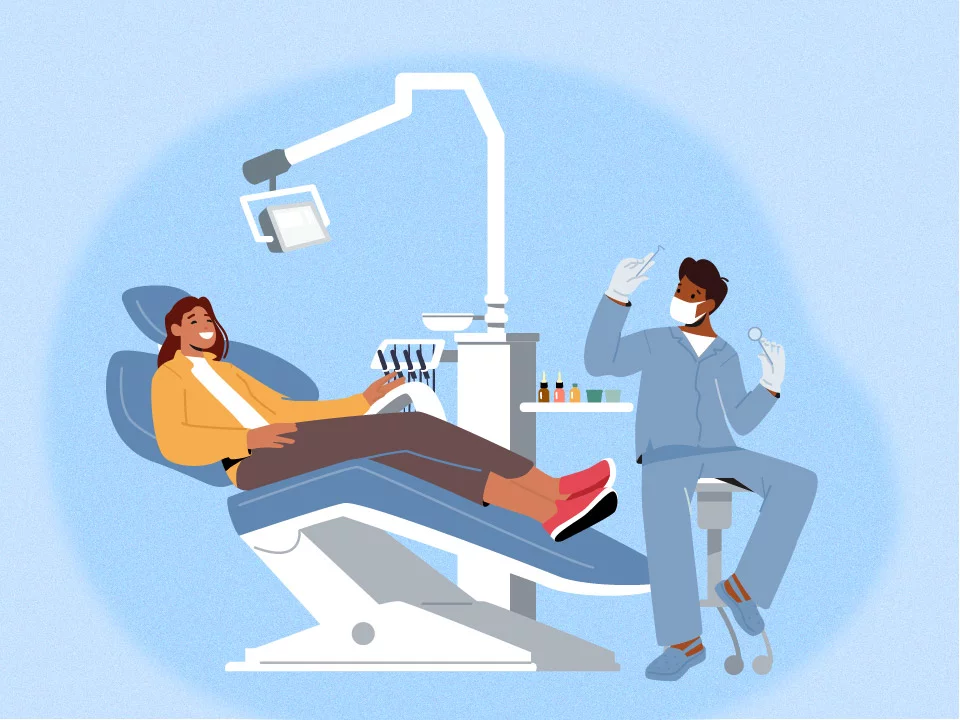
Dental myths can spread like wildfire through social media at an incredible rate. The speed at which information is spread makes it difficult to correct the dental myth to every person it reaches. In a study on dental myths, two independent investigators collected 318 pieces of misinformation about dental topics, with 62% of them found on Facebook. With 2.9 billion people who are active on Facebook every month, dental falsehoods can reach the far corners of the earth without being corrected.[16]
In a battle between dental myths vs facts, myths can easily win unless individuals do their due diligence to investigate the topics themselves. The best way to fact-check any information you come across online is to run it by your dentist at your next dental appointment. But a quick guide to dental facts to keep in mind are:
- Brush your teeth for two minutes, twice every day.
- Use a fluoride toothpaste to protect your teeth.
- Floss once per day to improve oral health.
- Avoid sticky foods that will keep sugars on your teeth for longer periods of time.
- Eating a healthy diet benefits your oral and overall health.
- Keep a regular dental appointment with your dentist.
Find your trusted, local dentist today!
Sources
[1]Fluoride: Fact Sheet for Health Professionals, NIH, Aug. 15, 2023, https://ods.od.nih.gov/factsheets/Fluoride-HealthProfessional/
[2] Etiology and Occurrence of Gingival Recession - An Epidemiological Study, PubMed, Dec. 2015, https://www.ncbi.nlm.nih.gov/pmc/articles/PMC4753713/
[3] Evaluation of Knowledge and Attitude of Parents about the Importance of Maintaining Primary Dentition - A Cross-Sectional Study, PubMed, Feb. 2019, https://www.ncbi.nlm.nih.gov/pmc/articles/PMC6436316/
[4] Genetics and Oral Health, ADA, Oct. 24, 2023, https://www.ada.org/en/resources/ada-library/oral-health-topics/genetics-and-oral-health
[5] To What Extent Residual Alveolar Ridge can be Preserved by Implant? A Systematic Review, PubMed, Dec. 2016, https://www.ncbi.nlm.nih.gov/pmc/articles/PMC5120622/
[6]Tooth Whitening: What We Now Know, PubMed, June 1, 2015, https://www.ncbi.nlm.nih.gov/pmc/articles/PMC4058574/
[7] Comparison of Medical, Dental, and Natural Radiation Levels, ORA Oral Surgery, May 29, 2024, https://www.orasurgery.com/comparison-of-medical-dental-and-natural-radiation-levels/
[8] Don’t Toss the Floss!, NIH, Nov 2016, https://newsinhealth.nih.gov/2016/11/dont-toss-floss
[9] Sugars and Tooth Decay, Action on Sugar, May 29,2024, https://www.actiononsugar.org/sugar-and-health/sugars-and-tooth-decay/
[10] Adult Health, Mayo Clinic, Mar. 14, 2024, https://www.mayoclinic.org/healthy-lifestyle/adult-health/in-depth/dental/art-20047475
[11] Diabetes and dental care: Guide to a healthy mouth. (2020, Nov. 3). Mayo Clinic. https://www.mayoclinic.org/diseases-conditions/diabetes/in-depth/diabetes/art-20043848
[12] Gum disease and heart disease: The common thread. (2021, February 15). Harvard Health Publishing, Harvard Medical School. https://www.health.harvard.edu/heart-health/gum-disease-and-heart-disease-the-common-thread
[13] Chen, C., Wu, Y. & Chang, Y. (2017). Association between chronic periodontitis and the risk of Alzheimer’s disease: a retrospective, population-based, matched-co-hort study. Alzheimer's Research & Therapy, 9(56). https://doi.org/10.1186/s13195-017-0282-6
[14] McGaw, T. (2002). Periodontal Disease and Preterm Delivery of Low-Birth-Weight Infants. The Journal of the Canadian Dental Association, 68(3), 165-169. http://www.cda-adc.ca/jcda/vol-68/issue-3/165.pdf
[15] Nutrition and Oral Health, ADA, Aug. 30, 2023, https://www.ada.org/en/resources/ada-library/oral-health-topics/nutrition-and-oral-health
[16] Leading Countries Based on Facebook Audience Size as of April 2024, Statista, May 22, 2024, https://www.statista.com/statistics/268136/top-15-countries-based-on-number-of-facebook-users/
Smile Generation blog articles are reviewed by a licensed dental professional before publishing. However, we present this information for educational purposes only with the intent to promote readers’ understanding of oral health and oral healthcare treatment options and technology. We do not intend for our blog content to substitute for professional dental care and clinical advice, diagnosis, or treatment planning provided by a licensed dental professional. Smile Generation always recommends seeking the advice of a dentist, physician, or other licensed healthcare professional for a dental or medical condition or treatment.


